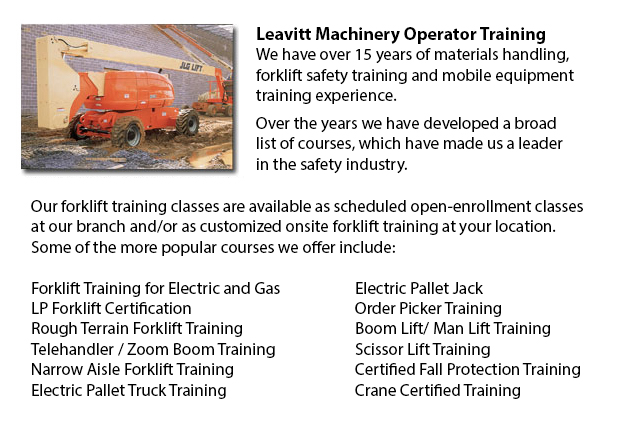
Markham Boom Lift Certification - Making use of elevated work platforms allow for work and maintenance operations to be done at elevated work heights that were otherwise not reachable. Workers using scissor lifts and boom lifts could be educated in the safe operation of these machines by acquiring boom lift certification training.
Despite the range in lift style, applications and site conditions, all lifts have the potential for serious injury or death when operated unsafely. Falls, electrocution, tip-overs and crushed body parts could be the terrible result of improper operating procedures.
To be able to prevent aerial lift incidents, individuals need to be qualified to be able to train workers in operating the particular kind of aerial lift they will be utilizing. Controls must be easily accessible in or beside the platform of boom lifts used for carrying workers. Aerial lifts must not be be altered without the express permission of the manufacturer or other recognized entity. If you are leasing a lift, make sure that it is maintained correctly. Before using, safety devices and controls should be checked to ensure they are properly working.
Operational safety procedures are essential in preventing incidents. Operators must not drive an aerial lift with the lift extended (although some are designed to be driven with the lift extended). Set outriggers, if available. Always set brakes. Avoid slopes, but when needed utilize wheel chocks on slopes that do not exceed the slope limitations of the manufacturer. Adhere to weight and load limits of the manufacturer. When standing on the platform of boom lifts, make use of full-body harnesses or a safety belt with a two-foot lanyard tied to the basket or boom. Fall protection is not required for scissor lifts that have guardrails. Never climb or sit on guardrails.
The boom lift certification course provides instruction in the following fields: training and certification; safety tips in order to prevent a tip-over; slopes and surface conditions; inspecting the travel path & work area; stability factors; other guidelines for maintaining stability; leverage; weight capacity; pre-operational inspection; testing control functions; safe operating practices; mounting a vehicle; safe driving procedures; power lines and overhead obstacles; use of lanyards and harness; PPE and fall protection; and prevent falling from platforms.
The successful trainee will become familiar with the following: authorization and training procedures; pre-operational inspection procedures; how to prevent tip-overs; factors affecting the stability of boom and scissor lifts; how to utilize PPE, how to use the testing control functions and fall prevention strategies.
-
Markham Forklift Certification Schools
Markham Forklift Certification Schools - Forklift Certification is mandatory in North America. Hence, forklift training programs are essential both for businesses and for people seeking jobs in industries as forklift operators. Forklift training focu... More -
Telehandler Training in Markham
Telescopic handlers normally called telehandlers for short, are a very popular piece of heavy construction equipment. They are commonly utilized in the construction and agricultural trades. These machines have maximum reaching capability and can get... More -
Markham Zoom Boom Training
Markham Zoom Boom Training - Zoom Boom Training is designed to train operators on variable reach forklifts. The objectives of the training are to impart an understanding of the physics of the machinery, and to outline the operator's tasks. This progr... More -
Markham Heavy Equipment Ticket
Markham Heavy Equipment Ticket - A heavy equipment operator will utilize different construction machinery, depending upon the nature of the task at hand. The large equipment are constructed to carry out specific tasks in the most efficient method for... More -
Markham Scissor Lift Training
Markham Scissor Lift Training - When operating a scissor lift, they must be utilized competently so as to protect the safety of the other employees inside the workplace and to protect the safety of the machine. Competent operators are trained to driv... More -
Markham Manlift Operator Training
Markham Manlift Operator Training - The aerial lift or manlift is a specialized kind of hydraulic platform which is designed to raise a person vertically giving it an alternate name of a vertical personnel lift. These machines are widely used for a m... More -
Markham Heavy Equipment Training
Markham Heavy Equipment Training - The two most common kinds of heavy equipment training are classed into the categories of machinery; equipment that is fashioned with tracks and those with rubber tires. The tracked vehicle are heavy duty equipment s... More -
Markham Forklift Safety Training
Markham Forklift Safety Training - Those wanting work in industries that utilize forklifts should undergo a forklift safety training course before becoming a certified operator of a forklift. There are various ways to go about getting forklift safety... More

Forklift Certification Markham
TOLL FREE: 1-888-254-6157
Markham, Ontario
forkliftcertificationmarkham.com
Email Us
About Us


